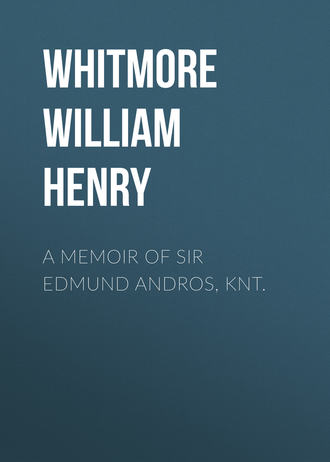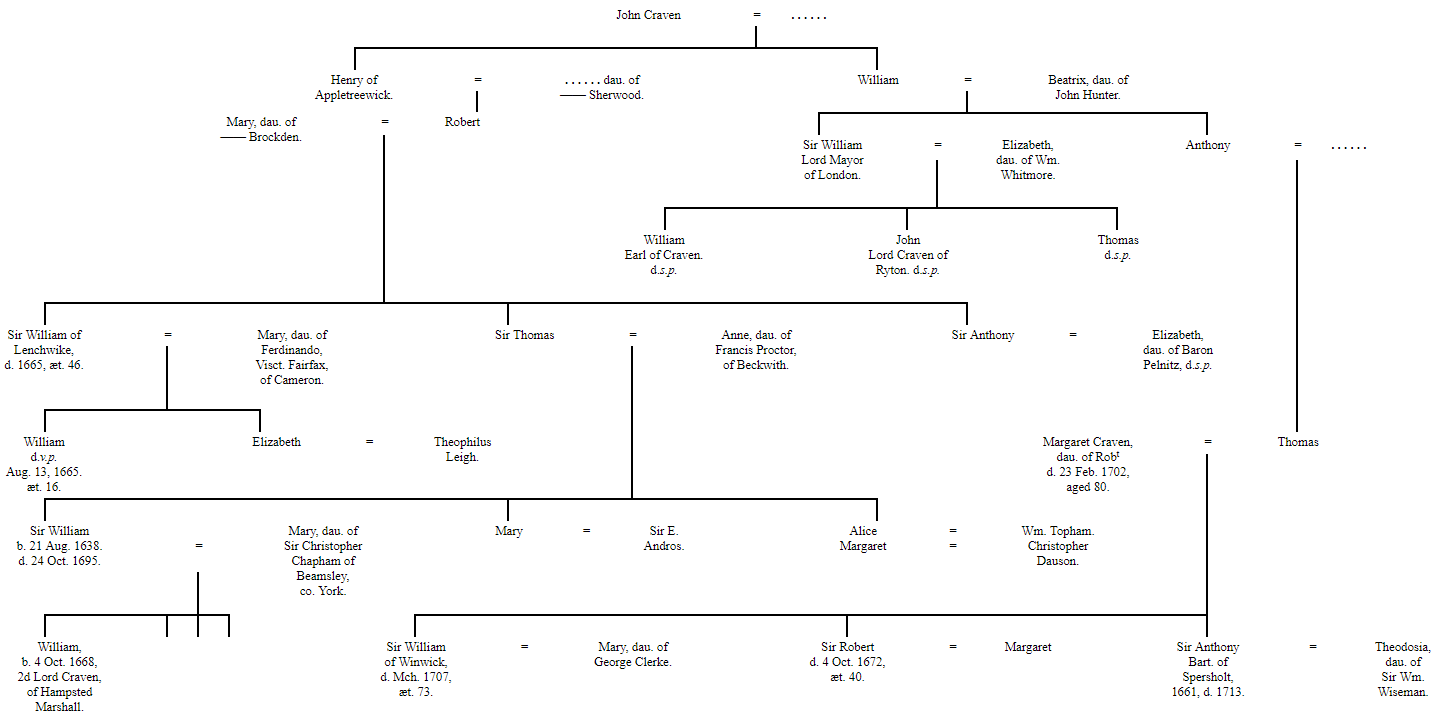 полная версия
полная версияA Memoir of Sir Edmund Andros, Knt.
Signed sealed declared and published by the said Sir Edmund Andros to be his last Will and Testament in the presence of the Witnesses hereunder written which said Witnesses subscribed their names in the presence of the said Sir Edmund Andros—James Spenceley—Rob: Hodson Jno. Hodson—
Probatum fuit hujus modi Testamentum apud London coram Venerabili Viro Johanne Andrew Legum Doctore Surrogato Præhonorandi viri Domini Caroli Hodges Militis Legum Etiam Doctoris Curiæ Prerogativæ Cantuariensis Magistri Custodis Sive Commissarii legitime constituti Octavo die mensis Martii Anno D'ni Millesimo Septingentesimo decimo tertio juramento Johannis Andros Armigeri Executoris in dicto Testamento nominati Cui Commissa fuit administratio omnium et singulorum bonorum jurium et creditorum dicti defuncti de bene et fideliter administrando eadem ad Sancta Dei Evangelii Jurat.
NOTES ON THE PRECEDING MEMOIR
SINCE the foregoing pages were in type, we have been favored with some additional information concerning the Governor, through the kindness of A.C. Andros, Esq., one of the present representatives of the family.
A
He refers, first, to the printed account of Sir Edmund Andros, to be found in the following book:—"Sarnia, or Brief Memorials of many of her sons," by Ferdinand Brock Tupper, Esq. of Guernsey, published in that island in 1862. In it the fact is mentioned that the manor or fief of Sausmarez (anglice Saltmarsh) in St. Martin's parish, was sold in 1748 by the Andros family to a branch of the Sausmarez family which still owns it.
B
Amice Andros, father of Sir Edmund, was "keeper of the castle of Jerbourg, and hereditary Cup-bearer to the King in Guernsey, as also one of the gallant defenders of Castle Cornet, during its memorable nine years' siege. Two of his brothers, military officers, were slain; one in the service of the King of Bohemia, who was son-in-law of James I. of England; and the other in 1644, during the Civil War."
C
We have mentioned (p. xxii) that Sir Edmund received in 1683 a grant of the Island of Alderney for ninety-nine years. Mr. Tupper states that Lieut. General John Le Mesurier, who died 21st May, 1843, was the last hereditary governor of Alderney. He was descended from Anne Andros, sister and co-heir of George Andros, the nephew and heir of Sir Edmund. Gen. Le Mesurier resigned the patent in 1825, on condition of receiving a pension of £700 a year until its expiration in 1862.
D
In an old pedigree, written about A.D. 1687 by Charles Andros, uncle of the Governor, and still preserved in the family, are a few additional items relating to Sir Edmund. Before 1660 he served three years in a troop of horse commanded by his uncle, Sir Robert Stone, in Holland, and had a commission as Ensign to go to the island of Funeme in Denmark.... After the death of the Queen of Bohemia he was made ensign of the company of Sir John Talbot, Captain of the King's guards. He was married "in England" to Mary Craven in February, 1671. March 30th, 1672, (by which we understand the same year as that of his marriage,) he was made Major of Prince Rupert's Dragoons. "The 14th day of January, 1673," (? 1673-4,) he received "by patent in reversion the charge of the Bailly of the island of Guernsey." "The 13th April, 1683, the King, Charles II. gave the charge of Gentleman in ordinary of his privy chamber" to Sir Edmund, and "the 6th day of the month of June, 1685, the King, James II. gave a commission to the above Sir Edmund Andros to command a troop of cavalry to go against the rebels in England." This refers of course to Monmouth's Rebellion. In August, 1685, he was made Lieut. Colonel of Lord Scarsdale's cavalry. (Ante, p. xxii.) "The 19th October, 1686, the above Sir Edmund left England to go to New-England;" he arrived 19th December, 1686. (Ante, p. xxvii.)
E
We are indebted to Mr. Andros for a photograph of an original portrait of Sir Edmund, from which the engraving prefixed to this memoir has been made. As no other likeness of the Governor has been published, our readers will fully appreciate the kindness of this contribution, and will cordially join in expressing thanks for it.
CORRECTIONS RECEIVED AFTER THE MEMOIR WAS PRINTED
P. v. The Memoir in Duncan's History was written by the late Mr. Thomas Andros of Guernsey, who died in 1853.
P. vii. Colette, first wife of Charles Andros, was daughter of Josias Le Marchant. George Andros who m. Anne Blondel, died 10 Nov. 1685; so say the family records.
P. ix. The pardon was dated 18th August. The baronet was Sir Henry De Vic.
P. xi. Edmund Andros returned from Barbados to England in August, 1668, as appears by a letter of the 13th of that month from Mr. Thomas Samborne to Mr. Amias Andros announcing his son's arrival in London.
P. xxxv. Sir Edmund's second marriage was in 1691, says Mr. Chester. The Crispes were of Goudhurst, Kent.
P. xlvii. The two brothers of Amice Andros were Joshua, killed in Germany, and John, "Master of Artillery to Prince Maurice," killed in England.
1
The Andrews family of Denton bore "Gules, a saltire or, surmounted of another vert." O'Callaghan and Trumbull (Col. Rec. of Conn. iii. 392) have followed an error in Berry's History of Guernsey, wherein the arms of Andros are said to be "a chevron between three pelicans vulning themselves." Such a coat indeed is found on the monument of Amice Andros, but they undoubtedly belong to his wife Elizabeth Stone, the mother of Governor Andros.
2
"She lived with her husband 42 years and was the mother of 9 children." She died 25 Dec. 1686, aged 73. (Berry, Hist. Guernsey.)
3

4
It has been reprinted (New York, 1860) with notes by Dr. E.B. O'Callaghan.
5
Not much is known of Col. Piercy Kirke. His father was Col. Lewis Kirke, who in 1642-3 commanded the Royal forces in the defence of Reading against the troops under Hampden. (Lord Nugent's Life of Hampden, ii. 339-343.) Some account of Kirke is given in "Notes and Queries," 2nd S. viii. 472. It seems that Piercy Kirke, in 1673, served under the Duke of Monmouth in the army of the King of France. In 1675, he was Captain-Lieutenant in the Royal regiment of Horse-Guards; and in 1680, he was made Lieutenant-Colonel of the 2nd Tangier regiment. He was soon after made Colonel of this regiment, and in 1682 was transferred to the Queen's regiment. In 1684, he came with his regiment to England, and was employed under the Earl of Feversham during Monmouth's rebellion. His conduct after that revolt was quelled, has covered his name with infamy, and Macauley has drawn his character in vivid colors. He was made Brigadier-General in 1685, was one of those who joined William of Orange, and distinguished himself at the battle of the Boyne in 1690. He was promoted to the rank of Lieutenant-General in the same year, was sent to the army in Flanders, and died at Breda, October 31, 1691.
He married Lady Mary Howard, daughter of George, fourth Earl of Suffolk. From the identity of names it is probable that his son was the Percy Kirke who in 1735 was a Brigadier-General, commanding the King's Own Regiment of Foot.
6
In Trumbull's Conn. Records, iii. 437, is a letter from John West to John Allen at Hartford. It is dated January 21st, (Saturday,) and states that he writes to let Allen "know the great griefe and sorrow wee are in for my Lady Andros, who since Tuesday last was sevenight hath been extreamly ill, and soe continues almost at the Court of Death, and is a greate affliction to his Excellency who is most passionately concerned. If it should please God to call her to himselfe, wee should all have a greate losse of a right good and vertuous Lady."
In a postscript West adds—"January 26th. Mr. Belcher not proceeding on his intended Journey, have opportunity to add that on Sunday last the Lady Andros departed this life, to the great griefe and sorrow of his Excellency and all that knew her."
As to the funeral, the following account is given in Judge Sewall's Diary, quoted in Bridgman's King's Chapel Epitaphs, p. 318. "Between 4 and 5 I went to the funeral of the Lady Andros, having been invited by the Clark of the South Company. Between 7 and 8 (lychns illuminating the cloudy air) the corpse was carried into the herse drawn by six horses, the soldiers making a guard from the Governor's house down the Prison Lane to the South meeting-house; there taken out and carried in at the western door, and set in the alley before the pulpit, with six mourning women by it. House made light with candles and torches. There was a great noise and clamor to keep people out of the house that they might not rush in too soon. I went home."
7
Palfrey, iii. 558, 561, 562.
8
Palfrey, iii. 568.
9
Ibid, iii. 570.
10
See Hutchinson, i. 392; R.I. Records, iii. 256.
11
Communicated by W.S. Appleton, Esq.



